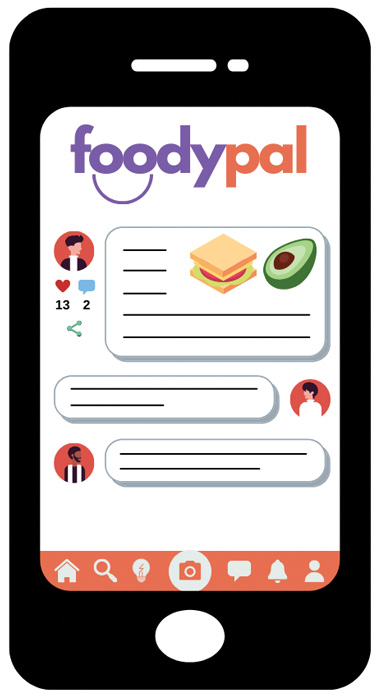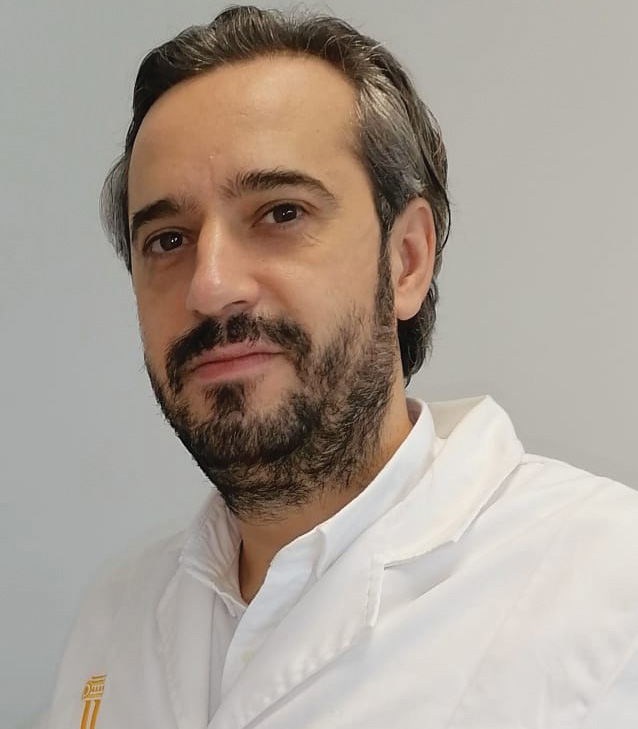IFT announces leadership election results; Student members hack food waste solutions
IFT WORLD
IFT announces leadership election results
Congratulations to the following individuals, who have been elected as IFT leaders and will take office on Sept. 1, 2021: President-Elect Chris Downs, general manager, Crop and Food Science Department of Agriculture and Fisheries, Queensland, Australia; Board of Directors members William (Bill) Barrier, chief strategy officer, Pecan Deluxe Candy Co., United States; Nicolas Bordenave, assistant professor, University of Ottawa, Canada; Margaret (Peggy) Poole, vice president, Tea Division, Bigelow Tea Co., United States; and Gunnar Sigge, department head and associate professor, Stellenbosch University, South Africa.
Recognizing IFT’s 50-year members
The following individuals are celebrating their 50th anniversary as members of IFT: Ahmed Awad, Robert K. Benson, Thomas C. Bibeau, Michael Campbell, Jack L. Cooper, James H. Denton, John M. Dunker, Arnold I. Epstein, John W. Erdman Jr., John F. Fuller Jr., Edward L. Gehrke, Dennis W. Green, Ronald D. Harris, Raymond J. Heinz, C. Terry Hunt, Mark A. Kantor, Dietrich Knorr, Terry R. Lack, Chong M. Lee, Ernest J. Mandere, Neil H. Mermelstein, John R. Mount, Eugene K. O’Neill, Jacquelynn O’Palka, Subba C. Rao, Barbara C. Raphael, Peter P. Rubenstein, Gale Shemwell Rudolph, Ronald J. Sasiela, Paul A. Seib, George J. Seperich, Jeff Sholl, Hong-Ming Soo, Carol Sprinkle, Kenneth R. Swartzel, John E. Vanderveen, Glen L. Weaver, and Kathie L. Wrick.
“Time flies,” says Dietrich Knorr, who notes that he was probably the first Austrian PhD student in 1971 to join IFT. When thinking back on his participation in IFT events over the years, he recalls, “I always admired the fact that the annual IFT meetings are basically a must for academics and their graduate students in the United States and thus provide a most effective way for personal interaction and exchange.”
John Erdman recalls a similar experience: “My membership and service in IFT began when I was a graduate student at Rutgers and active in the New York Section and helped launch my research and teaching career in the Department of Food Science at the University of Illinois. I have thoroughly enjoyed my service on numerous committees, including the Executive Committee, Program Committee, and Scientific Lectureship Committee and am proud to have been elected a Fellow of IFT.”
IFT thanks all of these valued members for their support.
Student members hack food waste solutions
Earlier this year, the International Division invited IFT student-members to join them for a week-long interactive hackathon, called Don’t Spoil It!, to develop solutions to the challenge of food waste. Working digitally in randomly assigned teams, the students designed technical concepts to help reduce food waste worldwide. Teams were judged on scientific merit, practicality of implementation, and the ability to describe and defend their idea in a succinct manner.
The winning team comprised Chandrima Shrivastava (Switzerland), Abdel Fawaz Bagoudou (Japan), Nigel Kang (United States), Eugenia Marcela Silva Almendarez (Honduras), and Katherine Sofia Sierra Melendrez (Honduras). Taking advantage of the popularity of social media, the team developed FoodyPal, a social media app designed to create a culture of valuing food through shared experiences.
“It was a very tough decision for the judges, since all of the teams presented very nice solutions to fight food waste,” says competition judge Lisa Franke, research associate in the Department of Food Biotechnology and Food Process Engineering at Technische Universität Berlin. “However, the team FoodyPal was chosen because they had an awesome presentation of their app helping consumers to avoid wasting food. The video was very nicely made and easy to follow. Furthermore, their answers to the questions asked were very clear and well thought out.”
“During our exploration of the food waste problem space, we realized that consumer households are a major contributor to food waste,” explains Shrivastava about the approach the team took to creating FoodyPal. “The essence of our idea is: ‘We are the problem; we are also the solution.’ With this platform, we developed a micro-community of users in the same neighborhood who can barter excess food, exchange recipes, or share tips and ideas. Additionally, food scientists and chefs can share their expertise-based knowledge on this platform.
“We leverage artificial intelligence to scan receipts, map the inventory of consumers, and suggest the most fitting recipes,” she adds. “The highlight is that we gamify this approach by introducing challenges and bonus points to trigger the reward center of the brain. We also translate this to dollars saved or ecological footprint per user. So it’s a consolidated approach to reduce food waste, while having some fun along the way.”
“Not only do we see FoodyPal as a social media app, but we also see it as a useful all-in-one tool for users to track food redistribution locations, get reminders on food spoiling in their fridge, search food and nutrition tips, etc.,” says Kang. “Our team as a whole feels that being food science students opened up our eyes about flaws in the food system. Being aware of the amount of food wasted globally certainly changed our relationships with food for the better, which is why we think FoodyPal could be a way to reduce food waste.”
Participating in the hackathon has had a positive impact on the team members, spurring them to consider more innovative approaches to reducing food waste. “The fact is, many initiatives have been undertaken all over the world to reduce food waste but still, so many things remain to be done,” says Bagoudou. “I felt like everyone should be involved in this global cause and I wanted to do my part by bringing in my contribution to tackle this issue. I also wanted to connect with people who share my interest in food waste.”
The main goal of hosting the hackathon, according to Zoila Chevez, graduate research assistant in the Department of Poultry Science at Auburn University and one of the hackathon’s organizers, was “to create awareness regarding food waste. We decided to partner with students because they are the future generation of food scientists and we wanted to generate networking between them.”
As it turned out, the collaborative nature of the event was one of the highlights for many participants, including Almendarez. “As a group, we discussed every option and idea we had,” she reports. “We tried to get to an accessible source of information because due to the pandemic, consumers are already familiarized with the type of interaction the app offers.”
In addition to the networking and learning opportunities presented by the hackathon, the event underscored how “curiosity, open-mindedness, and the willingness to learn can open doors in the future,” notes Kang.





